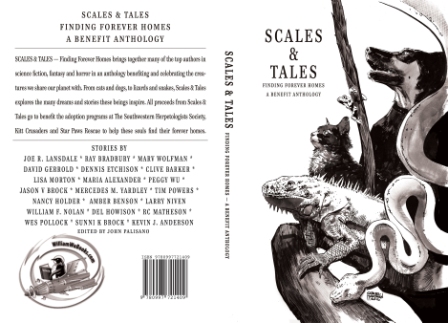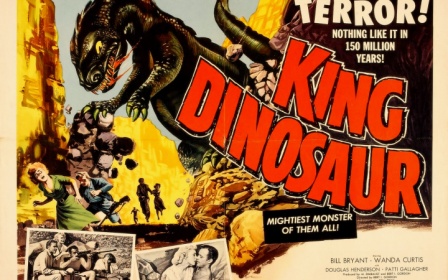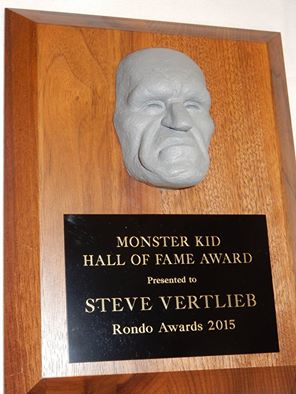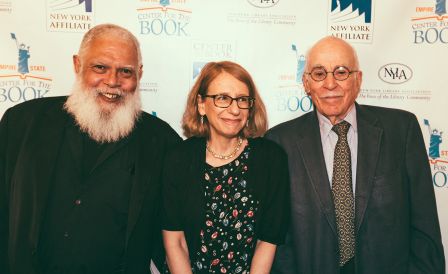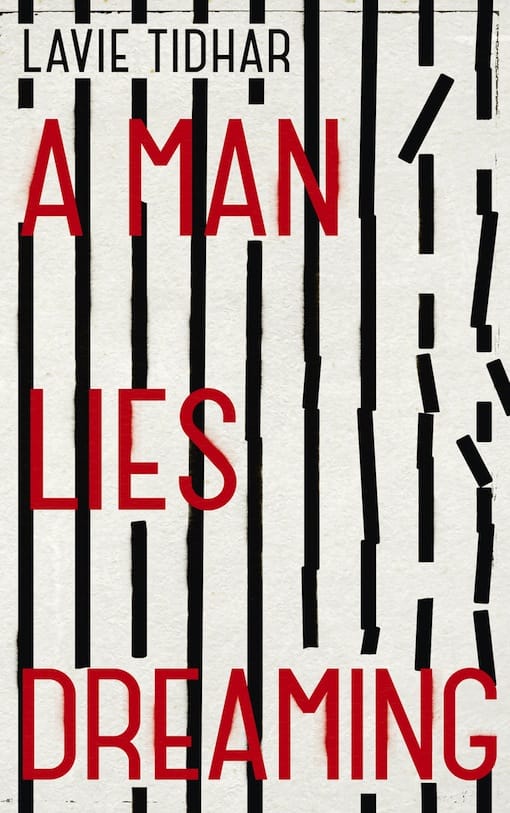(1) BRIANNA WU’S BOSTON GLOBE OP-ED. “We can all do something to stop this cycle of violence”.
It feels obscene to stare at these videos of black Americans being killed by police. It feels obscene to ignore them. It’s also vital to honor the police who were gunned down in Dallas, and yet I worry that retaliation will cost even more black lives. I feel overwhelmed by conflicting emotions — a sense of powerlessness and an urge to somehow stop this wave of violence.
But the stakes are too high to indulge in white guilt. This isn’t about our feelings, it’s about our responsibility. As noted feminist Ijeoma Oulo said, white people have to act today, and we have to act tomorrow. We have to act like our lives depend on it, because black lives actually do.
Given the carnage in Dallas, it’s important to note that the vast majority of police are willing to give their lives to protect the communities they serve. Rather than disparage law enforcement as a profession, our anger should be levied at the political systems that continually erase the wrongdoing of the small minority of police who dishonor their badge. Police operate in the framework we the citizens have built. They act in our name, according to the laws we ask them to enforce.
(2) COMMENT ON DALLAS. If not for the title, “4GW in Dallas”, would you have guessed the author of this analysis is Vox Day?
As of November, 1024 people were killed by police in 2015, 204 of them unarmed. For all that the police almost uniformly claimed to have been fearing for their lives, only 34 police were shot and killed during the same period. The public may be collectively stupid, but they’re not incapable of recognizing that statistical imbalance or that the police are trained to lie, obfuscate, and pretend that they are in danger when they are not.
Unless and until the police give up their military-style affectations, “us vs them” mentality, and most of all, their legal unaccountability, they’re going to find themselves fighting a war against the American people. And it is a war they simply cannot win.
What happened in Dallas may be shocking, but it isn’t even remotely surprising. Many people have seen it coming; what will likely prove the most surprising aspect of this incident is how many people will remain utterly unsympathetic to the Dallas police and their bereaved families. The police may consider themselves above the law, but they are not beyond the reach of an increasingly outraged public.
(3) I’M SORRY, I’LL READ THAT AGAIN. However, the post evidently didn’t set well with a lot of his followers, so Vox wrote a follow-up characterizing his position as merely a prediction fulfilled.
In the aftermath of the Dallas police shooting, it is understandable that many Americans are shocked, scared, and upset. The post-Civil Rights Act America has not turned out to be the society they thought it was, indeed, it is becoming increasingly obvious that those terrible racist Southern segregationists were correct all along. Targeted assassinations of authority figures are not a sign of a stable, well-ordered society.
But I have neither patience nor sympathy for those who have been emailing, commenting, and Tweeting to say that they are shocked by my comments with regards to Dallas and the overly militarized US police. I have said nothing I have not said many times before. My position has not changed one iota on the subject for over a decade. I have repeatedly predicted such events would take place, nor am I alone in that, as William S. Lind repeatedly warned about it as a consequence of 4GW coming to America in his book of collected columns, On War.
(4) THE SULU REVEAL. Adam-Troy Castro makes a case for “Why George Takei, Of All People, Is Now Wrong about Hikaru Sulu”.
George is absolutely right to have his preferences, ironic as they are. And I absolutely understand why he takes it so seriously. For an actor to do his job well, the role must hijack some of his gray matter, becoming a virtual person inside the real one; a person who may be evicted when the role goes away and another one must be prepared for. Part of George Takei has been Hikaru Sulu for decades; it is likely impossible, and to a large degree undesirable, for the scrutable helmsman he imagined to be evicted, in any real way, now. This is why he famously took a genuine, personal pride in the revelations over the years that Sulu’s first name (never mentioned on the original series) was officially Hikaru, or that he had advanced in his career to become Captain in the Excelsior, or that he had a daughter who also joined Starfleet. This is why Jimmy Doohan felt violated when the screenplay of a late STAR TREK film required Scotty to do a slapstick head-bonk in the corridor. The actors know the difference between reality and fantasy, but characters that near and dear to their hearts blur that line mightily, and this is for the most part a good thing.
However, he’s wrong on this, and this is why….
(5) CANON VOLLEYED AND THUNDERED. Peter David affirms the idea of making Sulu gay, while offering a lighthearted explanation why that fits the canon.
Some fans are crying foul, including George himself, declaring that it flies in the face of Trek continuity. Well, as the guy who wrote “Demora” in which Sulu is most definitely not gay, I’m here to say:
The fans are wrong. Even, with all respect, George is wrong.
In 79 episodes and all the movies, there is simply nothing to establish that Sulu is hetero. Yes, he has a daughter. Neil Patrick Harris has kids, too, so so much for that argument. He only displayed hetero leanings in exactly one episode: “Mirror Mirror” in which he is coming on to Uhura. But that wasn’t our Sulu. That was the Sulu of the mirror universe, and if the mirror Sulu is aggressively straight, then I suppose it makes sense that our Sulu would be gay, right? He’s the opposite, after all.
(6) A FORCE FOR GOOD? Peter Grant argues against “Publishing’s scary self-delusion” at Mad Genius Club.
I wasn’t surprised (but I was disappointed) to read this statement from Penguin Random House CEO Markus Dohle:
“Publishing is undeniably a force for good. But working in an industry that is inherently a service to society, we risk subscribing to the notion that this is enough. It’s not. We ought to do more—and we can—by taking advantage of our capacity as Penguin Random House to drive positive social, environmental, and cultural change, locally and globally.”
The statement was accompanied by a video message to PRH employees.
The scary thing is, Mr. Dohle undoubtedly believes his statement – yet, equally undoubtedly, it’s catastrophically wrong…..
There’s also the question of why PRH (and, by extension, other publishers) should do more. Surely their emphasis, their focus, should be on increasing their profitability, and thereby the returns to their shareholders and investors? The latter could then use some or all of the profits on their investments to support causes, activities and individuals with whom they agree or are in sympathy. For a corporation to play fast and loose with its owners’ money, in order to undertake or promote activities that have little or nothing to do with its core commercial activities, is, to put it mildly, disingenuous…..
(7) THE MAP OF LOST DISNEY ATTRACTIONS. Yahoo! Movies has a gallery of “22 Lost Disney Rides, From the Maelstrom to Mission To Mars”.
When the new Disney World attraction Frozen Ever After opened at Epcot Center recently in Orlando, eager families waited in line for up to five hours for their turn to see Anna and Elsa in the animatronic flesh. But sprinkled in amongst the jubilant throngs were some unhappy faces mourning the loss of the ride that the Frozen gang replaced: the Maelstrom, a log flume that had entertained visitors since 1988. It’s a reminder that almost every time a new ride debuts at the Happiest Place on Earth, another one twinkles out of existence. From Phantom Boats and Flying Saucers to a World of Motion and an ExtraTERRORestrial Encounter, we’ve assembled this gallery of some rides that are no longer in operation at Disney World and/or Disneyland in Anaheim.
(8) PORTRAIT COMPETITION. Nick Stathopoulos points out that critic Christopher Allan of The Australian predictably hated his entry in the annual Archibald Prize competition. (Can’t figure out why Nick’s link from FB to The Australian works, and the direct link hits a paywall, so I’ll link to him.) Nick has been a finalist several times, and anyway has a thick hide.
At least the massively oversized heads remain, like last year, in retreat. There are a few horrors, such as massive works by Abdul Abdullah, Nick Stathopoulos and Kirsty Neilson, which also reveal the nexus between size and the other bane of the Archibald, the reliance on photography. Stathopoulos’s work is suffocating in its obsessive rendering of the inert photographic image, and Neilson in her portrait of actor Garry McDonald has painstakingly rendered each hair in her sitter’s beard while failing to deal adequately with the far more important eyes.
(9) MY GOSH SUKOSHI. Another conrunner-for-profit has bit the dust, reports Nerd & Tie.
Sukoshi Con’s “Louisville Anime Weekend” was originally scheduled for July 29th-31st at the Ramada Plaza Louisville Hotel and Conference Center in Louisville, KY. With less than a month to go before the convention though, on Tuesday Sukoshi Con deleted their Facebook pages, pulled down their websites, and announced via Twitter that the event (and all future Sukoshi Con events) were cancelled.
https://twitter.com/sukoshicon/status/750419804234756096
It’s been a strange year and a half for James Carroll’s Sukoshi Con. Some of you may remember the weird saga of their Anime Southwest convention (in Denver oddly enough), where the con had to relocate hotels, multiple guests cancelled, and drama abounded — but that’s just the tip of the iceberg. In the last year and a half, the organization has cancelled four of their eleven planned events — including last years Louisville Anime Weekend.
We’ve heard rumblings of financial issues within the convention, though they have yet to be confirmed. It’s safe to say though that none of Sukoshi Con’s events are likely to come back.
(10) TWO HERMIONES. Emma Watson posted photos of her with Noma Dumezweni on Facebook of the two Hermiones meeting at a preview of the Harry Potter and the Cursed Child stageplay.
Yesterday I went to see the Cursed Child. I came in with no idea what to expect and it was AMAZING. Some things about the play were, I think, possibly even more beautiful than the films. Having seen it I felt more connected to Hermione and the stories than I have since Deathly Hallows came out, which was such a gift. Meeting Noma and seeing her on stage was like meeting my older self and have her tell me everything was going to be alright, which as you can imagine was immensely comforting (and emotional)! The cast and crew welcomed me like I was family and Noma was everything I could ever hope she would be. She’s wonderful. The music is beautiful
…
Emma Watson met the new Hermione, Noma Dumezweni, and the photos are perfection ???? https://t.co/hd0sixWuBA pic.twitter.com/JZl9BU9Kt6
— MuggleCast (@MuggleCast) July 8, 2016
(11) TODAY IN HISTORY
- July 8, 1947 – The first press reports were released on what has become known as the Roswell UFO incident.
The sequence of events was triggered by the crash of a Project Mogul balloon near Roswell. On July 8, 1947, the Roswell Army Air Field (RAAF) public information officer Walter Haut, issued a press release stating that personnel from the field’s 509th Operations Group had recovered a “flying disc”, which had crashed on a ranch near Roswell.
The military decided to conceal the true purpose of the crashed device – nuclear test monitoring – and instead inform the public that the crash was of a weather balloon.
(12) STUNT DOUBLE BUILDINGS. “Ivan Reitman Looks Back at the Original Ghostbusters ‘ L.A. Locations”in LA Weekly.
There’s no doubt that the attitude of the original Ghostbusters is inherently New York (though you could certainly imagine the scenario at Tavern on the Green playing out that way at certain Los Angeles restaurants). The truth, however, is that only about 35 minutes of what appears on screen in Ghostbusters was filmed in Manhattan. The remaining 1 hour and 10 minutes of screen time of the beloved movie that asked “Who Ya Gonna Call?” was shot on a Burbank studio lot and at practical downtown L.A. locales, including one of the most famous movie locations of all time: the Ghostbusters firehouse.
Now, before you start thinking, Wait a minute, I’ve visited that firehouse in New York. Yes, you may have stood outside Hook & Ladder 8, that mecca of movie locations on N. Moore Street in Lower Manhattan. The interior of the Ghostbusters firehouse, however, is old Fire Station No. 23, a decommissioned firehouse located at 225 E. Fifth St. in downtown Los Angeles.
(13) THE FUNNIES. The Wizard hits the celebrity autograph line at Wizardcon in yesterday’s Wizard of Id comic strip.
And today, the Wizard got taken in the dealer’s room.
(14) NONE IS THE LONELIEST NUMBER. Critic Jon Jon Johnson’s review implies a play aimed at the general public mentioned the Puppies. “The Greatest Science Fiction Show (No One’s Ever Seen)” was produced for the 2016 Capitol Fringe.
The Greatest Science Fiction Show (No One’s Ever Seen) provides no shortage of giggles, paired with some heartwarming moments. Part love letter to a old-school science fiction, part middle finger to the Sad Puppies of the Hugo awards, and part affection for geek culture, Grain of Sand’s show serves as a pleasant Fringe offering to delight fans of the genre and fans of the theatre.
(15) VANDYKE REPLIES. Peter J. Enyeart ranks the Hugo-nominated novelettes on the Stormsewer LiveJournal. Number Five wrote back.
- “What Price Humanity” by David VanDyke Space pilots fighting a war against invading aliens wake up in a strange simulation. Well, these military SF stories start to blur together after a while, don’t they? This was very Ender’s Gamey, with stylistic hallmarks reminiscent of Brad Torgersen (I’m thinking specifically of “The Exchange Officers,” which has a female character named “Chesty;” this one has a black character named “Token” (just because it was funny in South Park doesn’t mean it will work for you, bud)). It does have a bit of twist- a twist that you can see coming an astronomical unit away. And having an infodumpy prologue to a story this length is just narrative sloth. Boo.
David VanDyke, author of “What Price Humanity,” responded in a comment.
Kudos for you noticing “Token,” which is meant as a piece of deliberately painful, somewhat underhanded satire. My son-in-law of African ancestry, who flies fighters for the U.S. military, was given that nickname in training, as the only person of color in his class.
It’s both an indication of how far our society has come (the class members were well aware of the irony and were supportive, in the usual needling manner of combat operators) and an indictment of how far we have to go (if we could find 992 Tuskeegee Airmen, why can’t we recruit more minorities into the elite strata of today’s military?).
Placing such a subtle and unexplained item in a shorter story has its risks, particularly if a reader is predisposed to believe ill of an author, especially one that happens to have been published through Castalia House, but I try to start from a position of faith in the intelligence, imagination and good will of the reader, and hope for the best.
(16) COMPUTER-ASSISTED COMICS. M. D. Jackson’s wonderful series on comic book publishing technology continues at Amazing Stories — “Why Was Early Comic Book Art so Crude? Part 5: The Digital Revolution”.
Apple’s Macintosh was immediately adopted by graphic artists. With such programs as MacPaint and MacDraw, computer assisted art and design was born. The next year saw the introduction of the very first major comic book to be produced on a computer.
First Comic’s Shatter was created by writer Peter B. Gillis and artist Mike Saenz. Shatter was the story of a cop named Sadr al-Din Morales. The storyline of the comic was much in-line with works like Ridley Scott’s Bladerunner and Gibson’s Neuromancer. Threads of the story, such as distrust of corporations, the Film Noir feel of the project, and especially the artwork, would place it firmly in the genre of ‘cyberpunk.’
More importantly, the comic title, however much of a gimmick it may have started out as, showed that the potential for computer assisted comic book art was real. Using MacPaint and a mouse (this was before the invention of the tablet and stylus interface) artist Mike Saenz created each image as well as the lettering. The resulting pages were printed on a dot-matrix printer and then colored in a traditional way, but only because at the time the Macintosh was strictly a black and white machine.
(17) THE ARABELLA TRAILER. David D. Levine’s new novel, unveiled in a one-minute video.
Since Newton witnessed a bubble rising from his bathtub, mankind has sought the stars. When William III of England commissioned Capt. William Kidd to command the first expedition to Mars in the late 1600s, he proved that space travel was both possible and profitable. Now, one century later, a plantation in a flourishing British colony on Mars is home to Arabella Ashby, a young woman who is perfectly content growing up in the untamed frontier. But days spent working on complex automata with her father or stalking her brother Michael with her Martian nanny is not the proper behavior of an English lady. That is something her mother plans to remedy with a move to an exotic world Arabella has never seen: London, England. However, when events transpire that threaten her home on Mars, Arabella decides that sometimes doing the right thing is far more important than behaving as expected. She disguises herself as a boy and joins the crew of the Diana, a ship serving the Mars Trading Company, where she meets a mysterious captain who is intrigued by her knack with clockwork creations. Now Arabella just has to weather the naval war currently raging between Britain and France, learn how to sail, and deal with a mutinous crew…if she hopes to save her family remaining on Mars. Arabella of Mars, the debut novel by Hugo-winning author David D. Levine offers adventure, romance, political intrigue, and Napoleon in space!
[Thanks to Steven H Silver, Michael J. Walsh, and John King Tarpinian for some of these stories. Title credit belongs to File 770 contributing editor of the day Stoic Cynic.]



